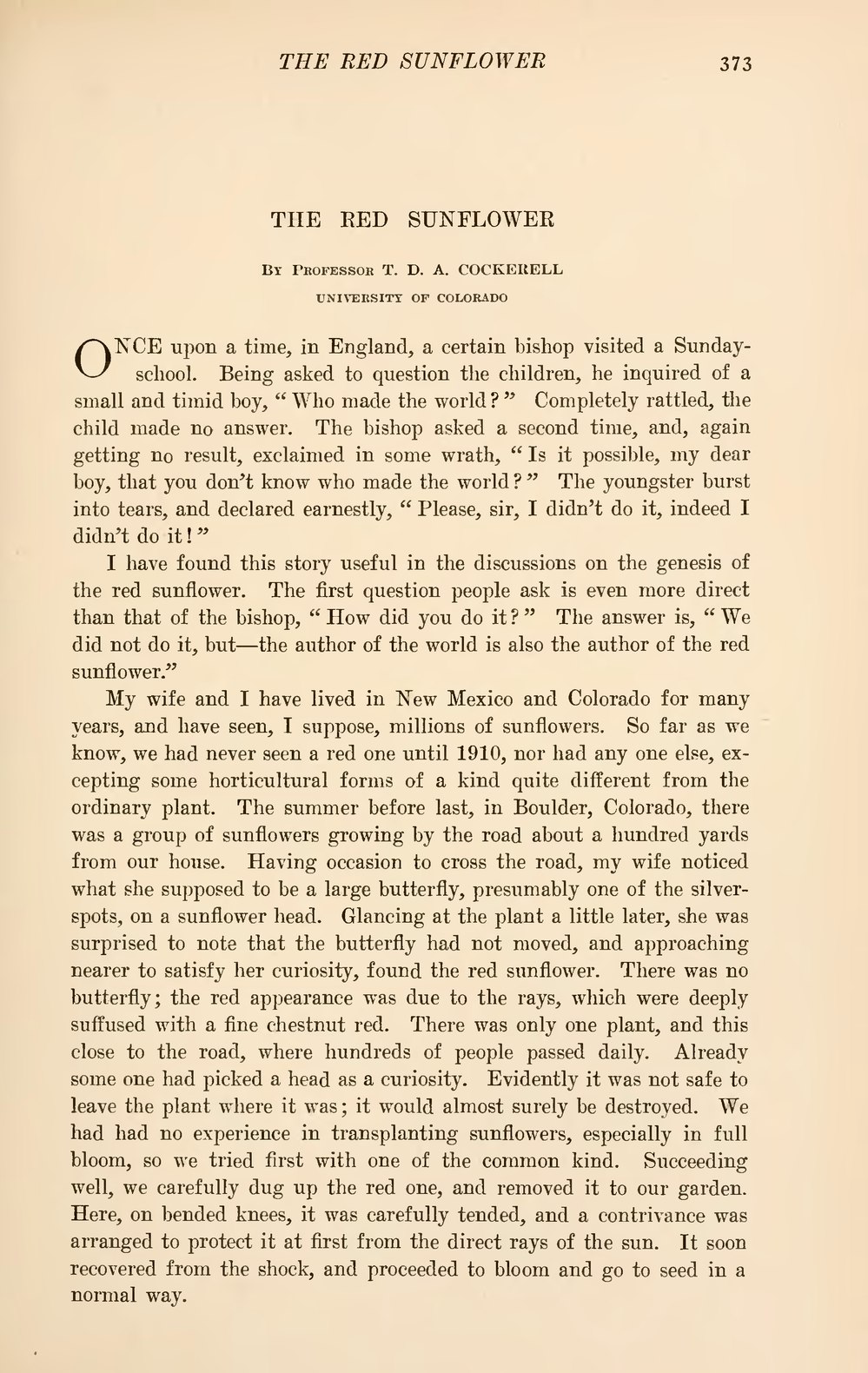| THE RED SUNFLOWER |
By Professor T. D. A. COCKERELL
UNIVERSITY OF COLORADO
ONCE upon a time, in England, a certain bishop visited a Sunday-school. Being asked to question the children, he inquired of a small and timid boy, "Who made the world?" Completely rattled, the child made no answer. The bishop asked a second time, and, again getting no result, exclaimed in some wrath, "Is it possible, my dear boy, that you don't know who made the world?" The youngster burst into tears, and declared earnestly, "Please, sir, I didn't do it, indeed I didn't do it!"
I have found this story useful in the discussions on the genesis of the red sunflower. The first question people ask is even more direct than that of the bishop, "How did you do it?" The answer is, "We did not do it, but—the author of the world is also the author of the red sunflower."
My wife and I have lived in New Mexico and Colorado for many years, and have seen, I suppose, millions of sunflowers. So far as we know, we had never seen a red one until 1910, nor had any one else, excepting some horticultural forms of a kind quite different from the ordinary plant. The summer before last, in Boulder, Colorado, there was a group of sunflowers growing by the road about a hundred yards from our house. Having occasion to cross the road, my wife noticed what she supposed to be a large butterfly, presumably one of the silverspots, on a sunflower head. Glancing at the plant a little later, she was surprised to note that the butterfly had not moved, and approaching nearer to satisfy her curiosity, found the red sunflower. There was no butterfly; the red appearance was due to the rays, which were deeply suffused with a fine chestnut red. There was only one plant, and this close to the road, where hundreds of people passed daily. Already some one had picked a head as a curiosity. Evidently it was not safe to leave the plant where it was; it would almost surely be destroyed. We had had no experience in transplanting sunflowers, especially in full bloom, so we tried first with one of the common kind. Succeeding well, we carefully dug up the red one, and removed it to our garden. Here, on bended knees, it was carefully tended, and a contrivance was arranged to protect it at first from the direct rays of the sun. It soon recovered from the shock, and proceeded to bloom and go to seed in a normal way.

